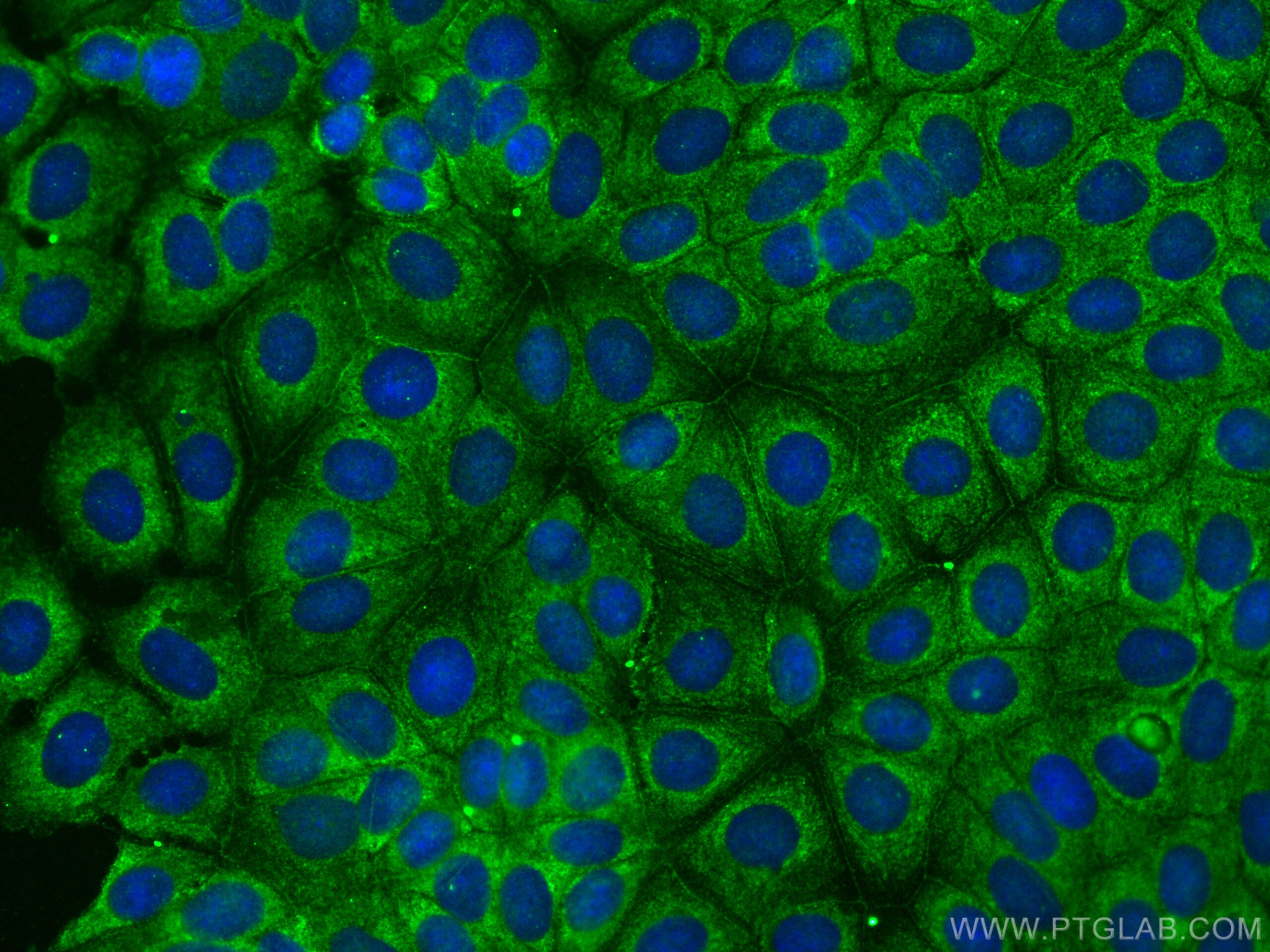Validation Data Gallery
Filter:
Tested Applications
| Positive IF/ICC detected in | MCF-7 cells |
Recommended dilution
| Application | Dilution |
|---|---|
| Immunofluorescence (IF)/ICC | IF/ICC : 1:50-1:500 |
| It is recommended that this reagent should be titrated in each testing system to obtain optimal results. | |
| Sample-dependent, Check data in validation data gallery. | |
Product Information
CL488-66968 targets PARD3 in IF/ICC applications and shows reactivity with Human samples.
| Tested Reactivity | Human |
| Host / Isotype | Mouse / IgG1 |
| Class | Monoclonal |
| Type | Antibody |
| Immunogen | PARD3 fusion protein Ag7656 相同性解析による交差性が予測される生物種 |
| Full Name | par-3 partitioning defective 3 homolog (C. elegans) |
| Calculated molecular weight | 151 kDa |
| Observed molecular weight | 170 kDa |
| GenBank accession number | BC011711 |
| Gene Symbol | PARD3 |
| Gene ID (NCBI) | 56288 |
| RRID | AB_3084292 |
| Conjugate | CoraLite® Plus 488 Fluorescent Dye |
| Excitation/Emission maxima wavelengths | 493 nm / 522 nm |
| Form | Liquid |
| Purification Method | Protein G purification |
| UNIPROT ID | Q8TEW0 |
| Storage Buffer | PBS with 50% glycerol, 0.05% Proclin300, 0.5% BSA{{ptg:BufferTemp}}7.3 |
| Storage Conditions | Store at -20°C. Avoid exposure to light. Stable for one year after shipment. Aliquoting is unnecessary for -20oC storage. |
Background Information
PARD3 (also known as ASIP, Par3, or Bazooka) is one of PARD proteins which are essential for asymmetric cell division and polarized growth. PARD3 is involved in the establishment of cell polarity and in the asymmetric cytokinesis. It plays a role in tight junctions at epithelial cell-cell contacts.
Protocols
| Product Specific Protocols | |
|---|---|
| IF protocol for CL Plus 488 PARD3 antibody CL488-66968 | Download protocol |
| Standard Protocols | |
|---|---|
| Click here to view our Standard Protocols |
